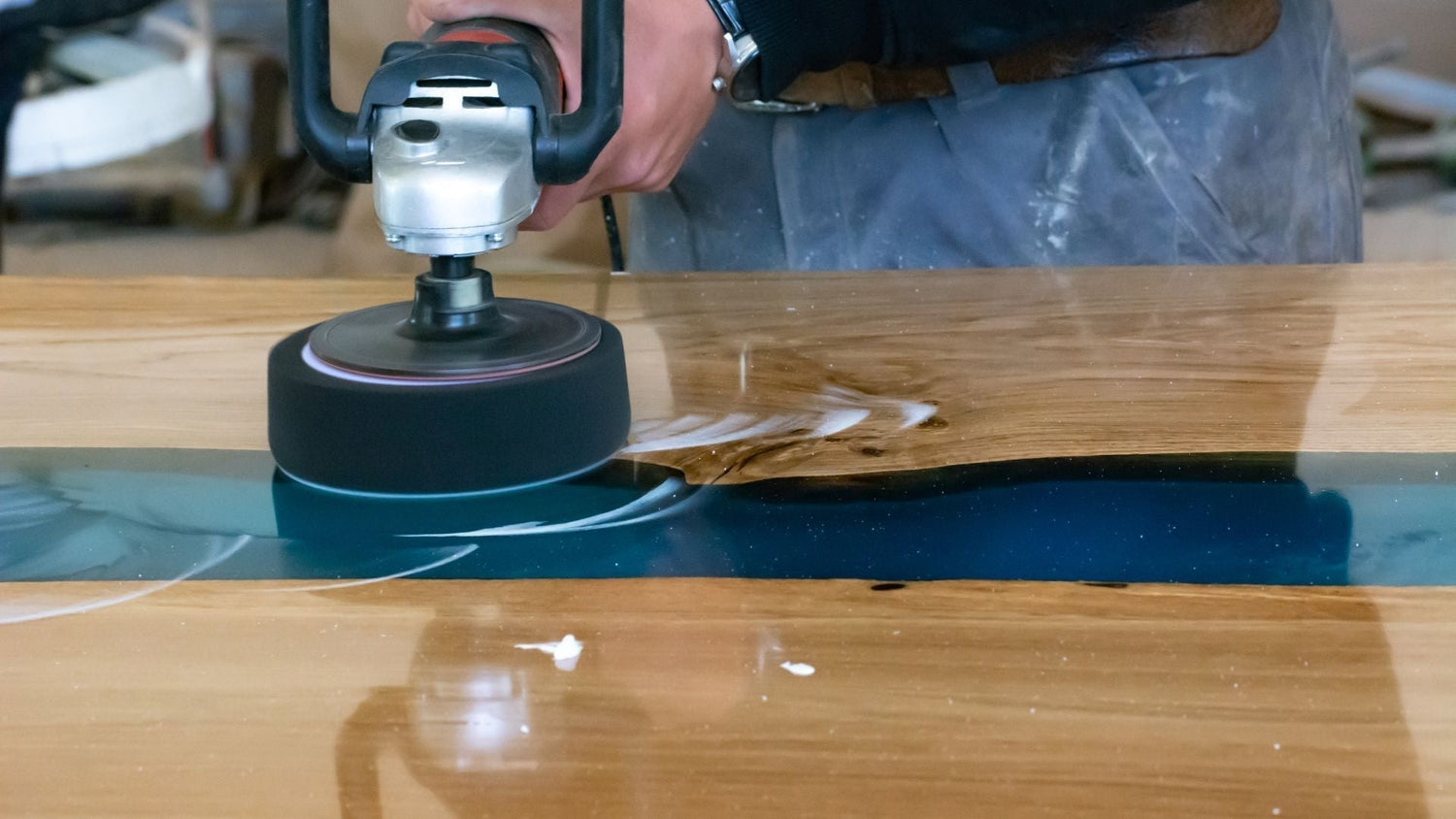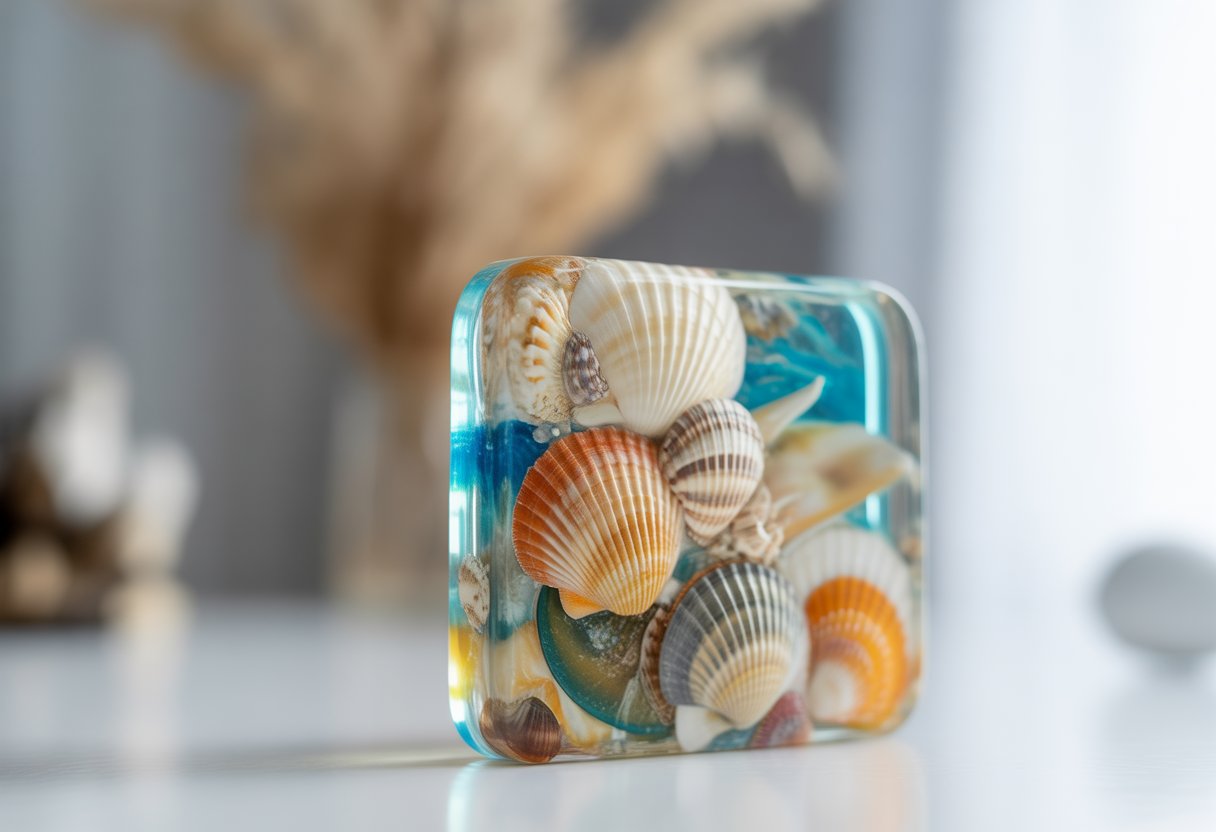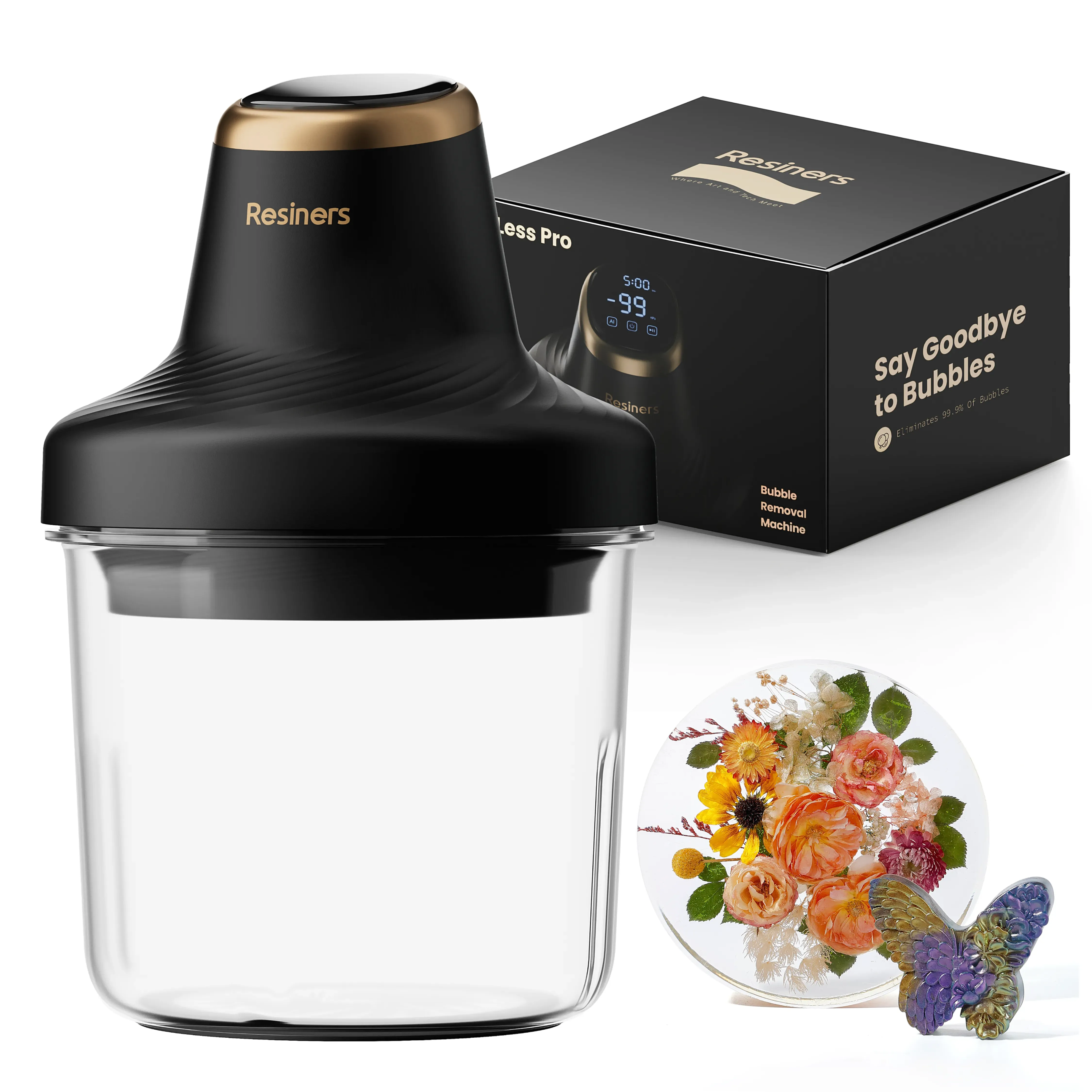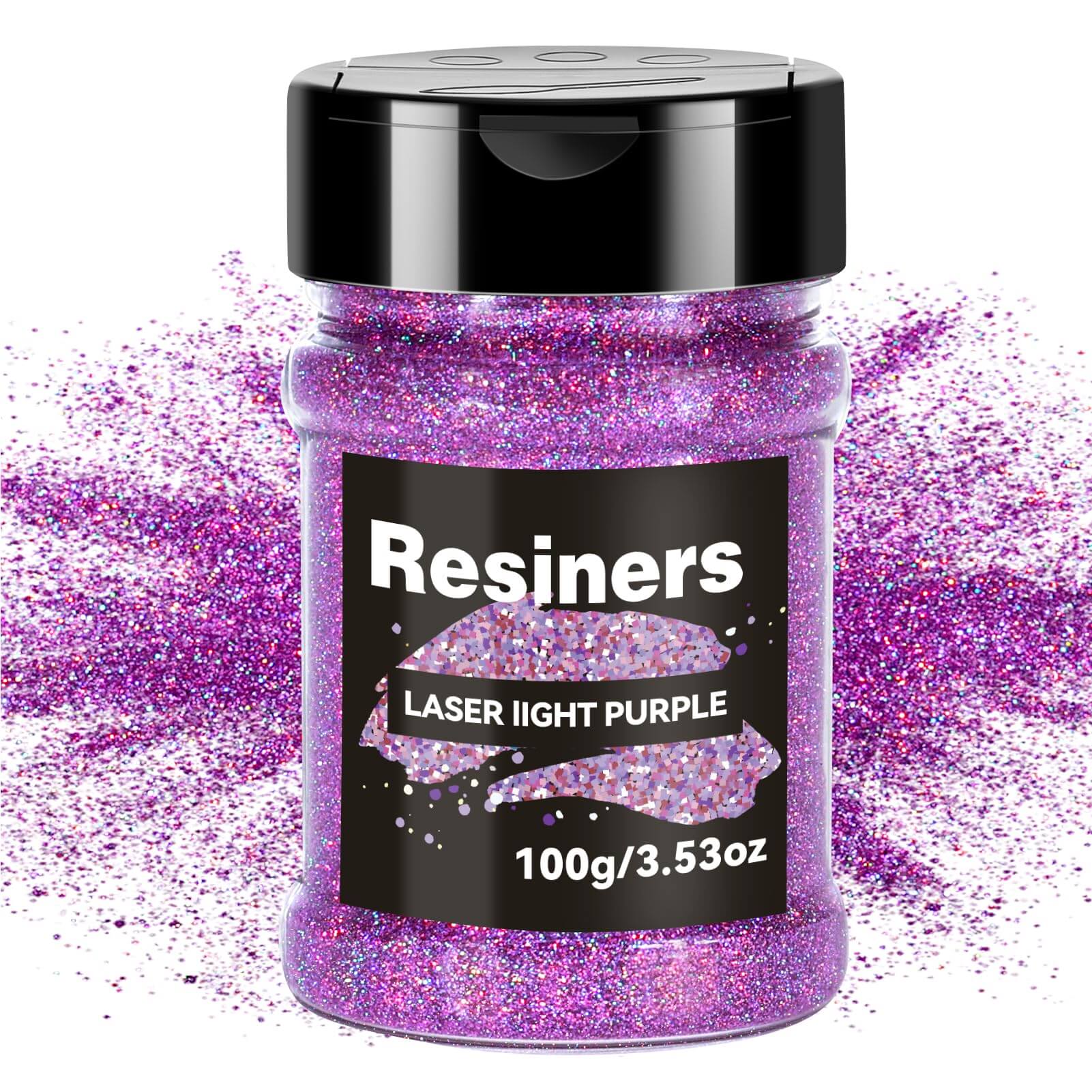Epoxy resin is a versatile and durable material used in various DIY projects, from countertops and furniture to art pieces and jewelry. While epoxy resin has a natural shine when properly applied, sometimes it requires additional polishing to achieve a glossy, smooth finish.
If you’re wondering how to polish epoxy resin for the best results, you're in the right place. In this guide, we’ll walk you through everything you need to know to achieve a flawless epoxy resin surface.
Understanding Epoxy Resin
Epoxy resin is a type of thermosetting polymer that, once mixed and applied, hardens into a solid, glossy finish. It's commonly used in crafting, furniture making, and even flooring because of its excellent durability and aesthetic appeal.
However, the resin often requires polishing to smooth out any imperfections, improve the overall finish, and make it shine brighter.Polishing epoxy resin not only enhances its appearance but also strengthens its surface, helping to protect it from scratches and general wear over time.
Key Benefits of Polishing Epoxy Resin
Before diving into the polishing process, it’s important to understand the benefits:
-
Increased Durability Polishing helps protect the resin surface from scratches, making it more resistant to wear and tear.
-
Enhanced Appearance A polished resin piece is more aesthetically pleasing, with a smooth, glossy finish that catches the light and draws attention.
- Long-lasting Protection Properly polished epoxy resin provides an additional layer of protection, preserving its beauty for years to come.
What Objects or Applications are Suitable for Polishing Epoxy Resin?
Before you start polishing, it’s important to know which epoxy resin objects are best suited for polishing.
-
Epoxy Resin Countertops Polishing resin countertops can enhance their appearance, making them shine and appear more durable.
-
Jewelry Resin jewelry, such as pendants and rings, benefits greatly from a polished finish, improving its aesthetic appeal.
-
Art Projects Resin is often used in art, and polishing helps bring out the rich, vibrant colors in resin paintings or sculptures.
-
Home Décor Epoxy resin is also used in various home décor items like tables, coasters, and trays, which require polishing to give them a glossy, smooth look.
It’s important to note that epoxy resin works best when polished after it has fully cured, as this ensures a smoother finish and minimizes the risk of imperfections.
Prepare the Tools You Need for Polishing Epoxy Resin
Essential Tools for Polishing Epoxy Resin
To polish epoxy resin, you’ll need the right tools to ensure a high-quality finish:
|
Tools Needed |
Description |
|
Sandpaper |
Start with wet/dry sandpaper (grits ranging from 400 to 2000) to remove imperfections and smooth the surface. |
|
Polishing Compound |
Choose a good-quality polishing compound to enhance the resin’s shine. |
|
Polishing Pad or Buffing Wheel |
These are used to apply the compound evenly and to buff the surface. |
|
Microfiber Cloth |
For cleaning and polishing after application. |
|
Water |
Used for wet sanding to prevent overheating and scratching the surface. |
Preparation Before Polishing Epoxy Resin
Before you start polishing your epoxy resin, it’s crucial to make sure the resin is fully cured. Epoxy resin typically takes 24-72 hours to cure, depending on the product and environmental factors like temperature and humidity.
Here’s what you should do in preparation:
Ensure the resin is completely cured
This is vital to avoid damaging the surface during sanding or polishing. If the resin is still soft or tacky, it won't polish correctly.
Tip: You can try Resiners curing machine features advanced technology and an innovative design to ensure quick and efficient resin curing. Whether you're just starting or are an experienced resin enthusiast, our machine is expertly crafted to meet your unique needs.
- Inspect for imperfections Look for air bubbles, dents, or scratches that may need to be fixed before polishing.
- Set up your workspace Ensure that your workspace is clean, dry, and well-ventilated. This will minimize dust and ensure you achieve the best finish.
Step-by-Step Guide on How to Polish Epoxy Resin
Step 1: Sanding the Surface
Sanding is the first step in the polishing process. It helps to smooth out any rough patches and prepares the surface for the polishing compound. Begin by using a coarse grit sandpaper (around 80-100 grit) and gradually move to finer grits, such as 220, 400, and then up to 600 grit.
- Start with a circular motion to sand the surface evenly.
- Be gentle and avoid applying too much pressure, as this can cause uneven surfaces.
- After using coarse grit, use finer grit sandpaper for a smoother finish.
Step 2: Applying a Polishing Compound
Once you’ve sanded the surface to a smooth texture, it’s time to apply the polishing compound. There are several types of compounds available, from paste to liquid, and the choice depends on your preference and the size of the project.
- Apply the polishing compound to a clean buffing wheel or cloth.
- Work the compound into the surface in a circular motion, starting from the center and working outward.
- Continue until the surface is shiny and free from dull spots.
How to Apply the Polishing Compound
Use a soft cloth or polishing pad and apply a small amount of polishing compound to the surface. Work the compound in a circular motion, applying light pressure to achieve a glossy finish. Be sure to spread the compound evenly to avoid uneven polishing.
When to Reapply Polishing Compound
If the surface doesn’t achieve the desired shine after the first round, apply a bit more compound and continue buffing. Multiple applications may be needed for deeper shine, especially on larger or rougher surfaces
Step 3: Buffing and Polishing the Resin
Buffing is the key step to achieving that mirror-like finish. Use a buffing wheel or polishing machine for this step, as it helps to work the compound evenly into the resin.
- Start at a low speed and work your way up to a higher speed to avoid damaging the surface.
- Use a steady, even motion to ensure the entire surface is polished uniformly.
- Keep the buffing wheel or machine slightly raised above the surface to prevent gouging.
Using a Standard Drill for Polishing
A standard drill with a polishing pad attachment is a great option for smaller projects. This method allows you to apply even pressure and control, ensuring that the polishing compound spreads smoothly.
Using a Polishing Machine
A polishing machine is more effective for large surfaces like epoxy resin countertops. It can quickly cover a large area and deliver a consistent, high-gloss finish.
Using a Resiners Tool for Precision Polishing
For intricate or small resin pieces, the Resiner’s Cordless Rotary Tool Kit for Resin Drilling and Polishing allows for detailed work, ensuring you don’t miss any tight corners or edges.
Polishing by Hand
For smaller projects or if you prefer more control, polishing by hand with a soft cloth or buffer pad can also deliver excellent results, though it requires more time and effort.
Step 4: Clean the Epoxy Resin Surface After Polishing
After polishing, it’s important to clean the surface thoroughly to remove any excess polishing compound or debris.
How to Clean Resin After Polishing
Use a clean microfiber cloth and gently wipe the surface to remove any leftover compound. Ensure there’s no residue left behind, as this can dull the shine or cause streaks.
Final Inspection for Imperfections
Inspect the polished epoxy resin under good lighting. If you notice any imperfections, you can repeat the sanding or polishing process as needed to achieve a flawless finish.
Common Mistakes to Avoid When Polishing Epoxy Resin
While polishing epoxy resin is straightforward, there are a few common mistakes to watch out for:
-
Sanding too aggressively If you apply too much pressure or use overly coarse grit sandpaper, you can damage the surface of the resin. Always work in stages, starting with finer grit sandpaper.
-
Not allowing the resin to cure fully Polishing uncured resin will result in an uneven and messy finish. Make sure the resin is completely hardened before starting the process.
- Using the wrong polishing compound Be sure to use a compound designed specifically for epoxy resin to avoid damaging the surface or creating a dull finish.
How to Make Resin Shiny Without Polishing
If you'd rather avoid the polishing process, there are several alternative methods to achieve a shiny finish on your epoxy resin:
-
Use a Resin Gloss Sealer
A resin gloss sealer provides a smooth, shiny finish without the need for polishing. Simply apply it to your resin project and let it dry for an instant glossy effect.
-
Use Toothpaste for a Quick Shine
Toothpaste can be used as a quick solution to add a bit of shine. Gently buff the resin surface with a soft cloth and a small amount of toothpaste to smooth out minor imperfections.
-
Buff with Automotive Wax
Automotive wax can be applied to buff the surface, providing a glossy finish. While this option works well for a temporary shine, it may not last as long as proper polishing. Apply the wax evenly and buff for a smooth, shiny look.
Conclusion
Polishing epoxy resin is a crucial step in creating a flawless, glossy finish for your projects. By following these simple steps cleaning, sanding, applying the polishing compound, and using the right polishing tools you can achieve professional-quality results. Remember to avoid common mistakes and use the best polishing compounds for a smooth, high-gloss finish that will make your epoxy resin projects stand out.
Looking to take your resin projects to the next level? Visit Resiners for high-quality tools and equipment designed specifically for resin artists. From curing machines to airless bubble removal systems, we have everything you need to create flawless, professional results every time!
FAQs About Polishing Epoxy Resin
How to make resin shine like glass?
To make resin shine like glass, you need to thoroughly sand the surface with progressively finer grits of sandpaper, starting from around 120 grit and moving up to 2000 grit or higher. After sanding, apply a polishing compound designed for epoxy resin and buff the surface with a soft cloth or a polishing machine. This process will smooth out imperfections and enhance the resin’s natural gloss, creating a glass-like finish.
Why do you polish resin?
Polishing resin is essential for enhancing its appearance by removing imperfections such as scratches, dull spots, or uneven surfaces. It gives the resin a smooth, high-gloss finish, making it look more professional and vibrant. The polishing process not only improves the visual appeal but also adds a layer of protection, helping the resin to resist damage over time.
Can I use oil to polish resin?
Oils can provide a temporary shine to epoxy resin but are not recommended for long-lasting results. While oils may give a quick gloss, they don’t offer the same durability and shine as proper polishing compounds. For a smooth, high-gloss finish that will last, it’s best to use a polishing compound specifically made for epoxy resin.
Can you polish epoxy resin by hand?
Yes, you can polish epoxy resin by hand, though it requires more effort and time compared to using a machine. Using fine-grit sandpaper and a polishing compound applied with a soft cloth, you can achieve a glossy finish, but the process will be slower. Hand polishing is ideal for small projects, but for larger surfaces, a polishing machine provides better efficiency and a more consistent finish.
Read Related Articles 📖













Leave a comment
This site is protected by hCaptcha and the hCaptcha Privacy Policy and Terms of Service apply.